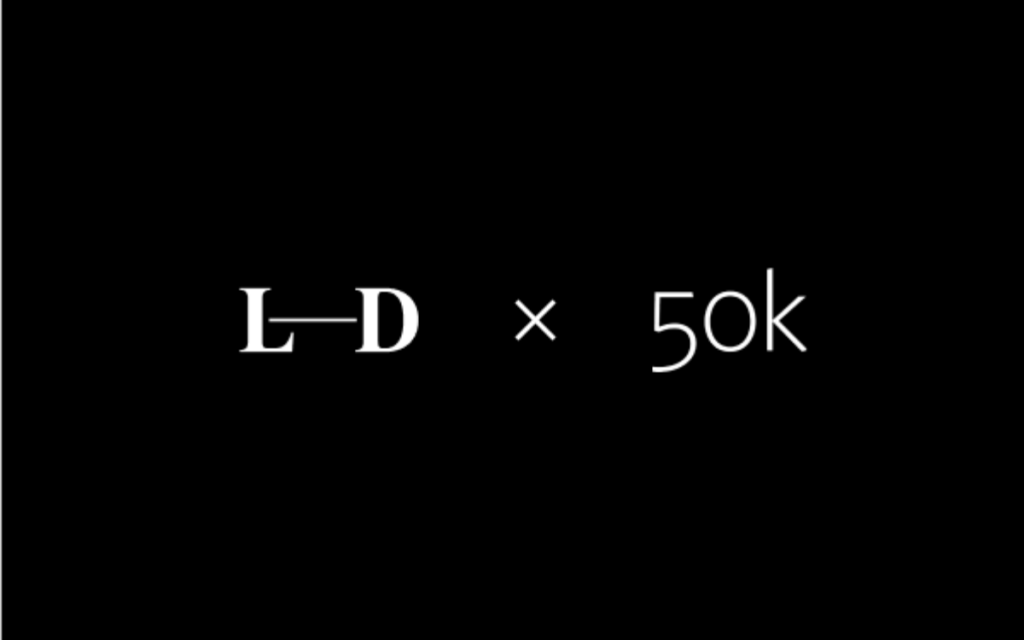How TikTok created the ‘Everyday Influencer’ and why brands should care
Brands looking to get on TikTok should prioritize smaller, niche creators
Danielle Moskowitz is a project manager at Long Dash. Previously, she worked on digital storytelling across editorial strategy projects and was a press intern in both the Senate and House of Representatives.
Twenty-five year old Canadian influencer Andie joined TikTok at the start of the pandemic when the app was rapidly growing in popularity. Her first post that went viral was a light-hearted video of her wearing various outfits that she created based on celebrity scandals.“It ended up blowing up and I gained 3,000 followers within two days,” she said.
Since then, Andie’s amassed over 300K followers on TikTok and 23K on Instagram. Her surge to influencer status was likely a product of TikTok’s recommendation system which takes neither follower count nor previous performance directly into account when curating content for users’ feeds. This helps level the playing field by giving creators with smaller audiences the opportunity to gain reach and compete with the success that celebrity and “macro” influencers have on other social media platforms.
These smaller creators finding fame on TikTok are known as “everyday influencers” and are seen as comparatively more authentic and credible than their celebrity counterparts according to Danielle Wiley, founder and CEO of influencer marketing agency Sway Group. She explains: “Celebrity-level influencers certainly have the kind of follower numbers that implies slam-dunk campaign success, but it’s the smaller creators who bring more sway to their sponsorships. Their audiences are more engaged, more loyal, and more likely to pay attention to a review or recommendation.”
“Celebrity-level influencers certainly have the kind of follower numbers that implies slam-dunk campaign success, but it’s the smaller creators who bring more sway to their sponsorships."
Wiley notes that one of the most popular types of everyday influencer is the “niche topic expert.” These creators include fashionistas and pop culture lovers (like Andie), chefs, athletes, DIY-ers, stay-at-home moms, and more. Their expertise attracts a loyal audience that watches for transparent reviews on products associated with that niche. In terms of follower count, these everyday influencers often fall into the nano and micro influencer categories. Nano influencers have between 5K-50K followers on Tiktok and 2.5K-10K followers on Instagram while micro influencers are ranked slightly higher with 50K-150K followers on Tiktok and 10K-100K followers on Instagram.
These everyday influencers may also soon find similar success on other social platforms given Instagram head Adam Mosseri’s recent announcement that the platform would also change its ranking system to prioritize both video and original content.
Another reason it’s crucial for brands to take note of this shift? Over half of global consumers now follow everyday influencers across various social media platforms. Bazaarvoice, a user-generated content solutions company, found that 37% of consumers are more likely to take product recommendations from an everyday influencer and that only 18% of US consumers trust sponsored social media posts. This shift in power, coupled with a declining trust in promoted content means brands must start rethinking their influencer marketing strategies.
Earning consumer trust with user-generated content
Brands looking to earn their consumers’ trust should consider making user-generated content (UGC) a pillar of their everyday influencer strategy. Unlike traditional influencer marketing where brands pay influencers with large followings to either feature in a company advertisement or create one of their own with a highly detailed brief, UGC gives creators creative control.
While giving up control might seem risky to brands, imposing too many guidelines on everyday influencers can lead to frustration and a disinterest in a long-term partnership. It’s important for brands to allow creators to use their own voice when making content so it feels more natural and authentic to their audience. Andie notes that creative control is an important factor to her when vetting brands she likes to work with. “If I know a video my audience isn’t going to like, then that’s bad for the brand and it’s also bad for me,” she said. She sees other creators becoming increasingly frustrated with the strict briefs that brands provide, especially since influencers know their audiences best.
Sign up for OnBrand
Our weekly digest featuring ideas on the future of brand.
To understand the growing power of giving an everyday influencer creative freedom, brands should consider UGC about clothing retailer Zara. Small fashion creators started a trend of unboxing their shopping hauls and showcasing identical outfits on various body types to help people interested in the brand get a preview before making a purchase. This resulted in Zara becoming one of the most influential clothing brands on TikTok with nearly 8 Billion views.
Under Armour is another example of a brand that allowed creativity to flourish in their campaigns. The athletic brand worked with female fitness influencers to engage more women. Their only guideline was to use the hashtags #unlikeany and #iwill. In return, the influencers created unique and authentic content generating over 6 Million impressions and nearly 400K registered engagements.
Andie also notes that her UGC ads on TikTok resonate strongly with her audience in a way they usually don’t on other platforms. “All of my ads with thredUP, my audience looks forward to now. They get so excited which you don’t see with ads,” Andie said. “But it’s because we’re on the same playing field. It’s a great exchange of both perspectives and experience.” It’s not just Andie’s fans either. In a recent report, over 50% of TikTok users described ads in a positive way, using phrases such as “fun and engaging,” “trendsetting,” and “inspiring.”
Trusting everyday influencers to create their own content with clear but minimal guidance is key to creating authentic content that connects with potential consumers. The data supports this too: Klear, an influencer marketing platform, found that “micro-influencers are getting up to 47% more engagements for their sponsored posts” while “celebrity influencers see a drop of up to 14% in engagements for their sponsored posts.”
Trusting everyday influencers to create their own content with clear but minimal guidance is key to creating authentic content that connects with potential consumers.
As social platforms such as TikTok and Instagram start to prioritize original content and smaller creators, brands should update their influencer marketing strategies to include the everyday influencer, and work toward building an authentic partnership with them structured through creative collaboration and freedom. These influencers, despite having a smaller number of followers, have loyal audiences that regularly engage with their content. For brands with niche products or services, these types of audience are invaluable because they are the most likely to convert into long-term customers. Everyday influencers possess a deep understanding of the wants and needs of their audience and can help produce higher-quality content using UGC principles for a more effective marketing strategy. Ultimately, everyday influences are here to stay and brands would be wise to back them up.





